There are different types of mining pump pontoons or modular industrial pontoons, and there are some critical points that must be determined when designing them for your project.
In this pontoon guide we will discuss what makes a good modular industrial pontoon system, which types are ideal for typical industrial floating applications, and how to choose and design a fit-for-purpose model for your needs.
Mining and water infrastructure industries utilise pontoons and floating walkways to support heavy pumping equipment or machinery during floating applications.
Listed below are the typical industrial pontoon applications:
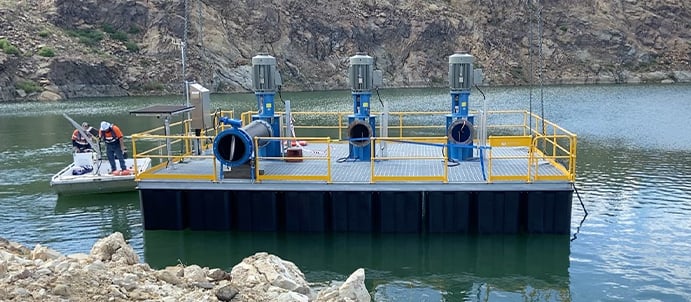
Mining companies utilise pump pontoons to manage mining tailings by draining excess water from the tailings dams. This is critical to prevent toxic substances from leaking into nearby water or local ecosystems, thereby promoting sustainable exploitation and environmental conservation.
Most open-pit and underground mining operations are prone to flooding due to the changing landscape of the mine site and heavy rainfalls. As such, mine sites plan dewatering operations to reduce the risk of flooding and to avoid shutting down mining operations.
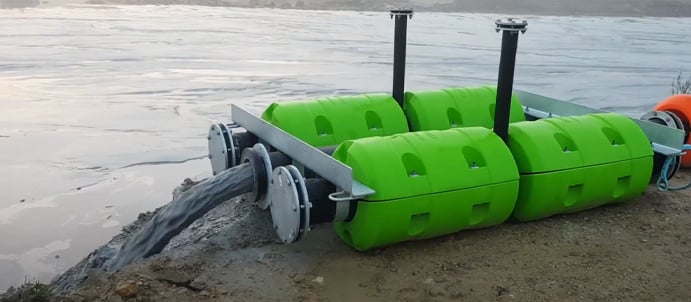
Pontoons can also be used to help dewater for hydro energy storage projects.
These hydro storage projects usually require two reservoirs or storages at differing elevations connected by a piping system and a pumping or generating unit. For this, they require initial dewatering to build hydro energy storage projects.
A perfct example of a project that required the use of a pontoon is the Kidston Hydro Project in Queensland. For the Kidston project, they utilised a heavy-duty modular pontoon designed for stability and its ability to carry the weight of the large pumps safely. You can check this link to learn more about this project.
A floating pontoon equipped with heavy pumping equipment is the ideal solution for de-sludging and pumping effluent water from holding ponds. This set-up is suitable for reclaiming and cleaning shallow bodies of water or pits without heavy excavation and drainage.
Floating pontoons are reliable platforms that can support dredging pumps used in high solid industrial pumping applications.
Pontoons can serve as stable access walkways for mining, or any industrial floating operations located in remote and waterlogged areas and can also be utilised as walkways in times of flood during mining operations.
At Coerco, we have been building floating walkways and pontoons for industrial applications for decades. We know that every pontoon is different, so we provide an extensive range of choices so you can find what works best for your needs.
Our products come in several different sizes and styles, so it is easy to find one that fits your needs. All variations are of high-quality materials like polyethylene and steel.
Browse these options below and if you want more information about how they work together, check out each product guide to gain a better insight into our products.
Heavy-duty Pontoons
If you are looking for a robust and reliable platform capable of handling heavy loads, look no further than our heavy-duty pontoons. Built with safety and stability in mind, our heavy-duty pontoons are ideal for permanent of semi-permanent applications that utilises large pump setups and can support a maximum load of 25 tonnes.
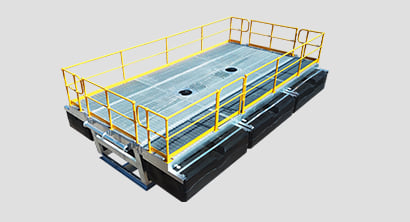
Donut Pontoons
Our donut pontoons can support a standard 1.5-ton submersible pump with a maximum diameter of 554 m2.
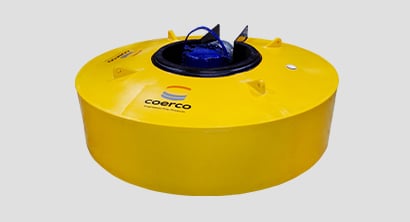
Poly Pontoons
Poly pontoons are lightweight and highly versatile for tight spaces and temporary setups. Fully manufactured using high-quality polyethylene materials, Coerco poly pontoons are UV stabilised and resistant to corrosion and harmful chemicals.
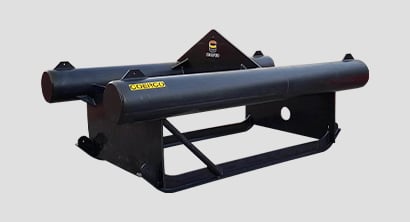
Modular Pontoons
Easily adapt and change your pontoon’s shape and size as your project requirements change. Coerco modular pontoons can support a maximum load of 5 tonnes and are simple to assemble and reassemble as needed.
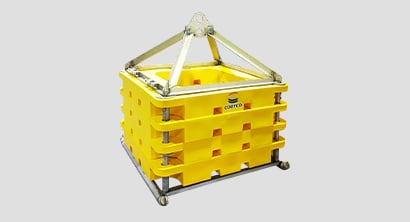
When choosing a pontoon for your project or application, there are several key factors. Listed below are the things you should look out for!
Before any industrial floatation activity, you should consider the weight of the object you wish to attach to the pontoon or to the floating work platform. The weight of the load determines the buoyant force, the upward force exerted by the body of water on the object. It is critical to calculate the buoyant force to determine whether the pontoon or floating platform will sink or float when fully or impartially submerged in a body of water.
In addition, it is also critical to calculate the total weight distribution on the pontoon during a full-on operation. This information is critical since industrial floating pontoons are attached with other accessories such as an access walkway and structural frames.
Choose a floating walkway built and designed to last through years of heavy use! It is best to look for pontoons manufactured with UV-stabilized polyethylene and assembled with stainless-steel components. UV-stabilised polyethylene slows down the degrading effects of UV radiation and chemical-induced corrosion.
In typical mining operations, it is ideal to utilise pontoons or floating walkways fully manufactured from polyethylene. Polyethylene can withstand the harshest environmental or weather conditions, including moisture and does not readily react with UV rays, petroleum, acids, and various industrial substances and chemicals.
Sometimes deployed pontoons are only accessible by walkways. In such cases, walkways would require maintenance, especially on moving parts such as pins, joints, bearings, and other mechanical parts needing replacement or lubrication. There may also be the need for periodic cycles of surface upkeeping and paint-touch ups to maintain the walkway's visibility.
Modular and straightforward pontoons are easier to assemble, reassemble, or take apart. In mining operations, modular builds offer flexibility whenever there is a need to add or remove more pump floats units.
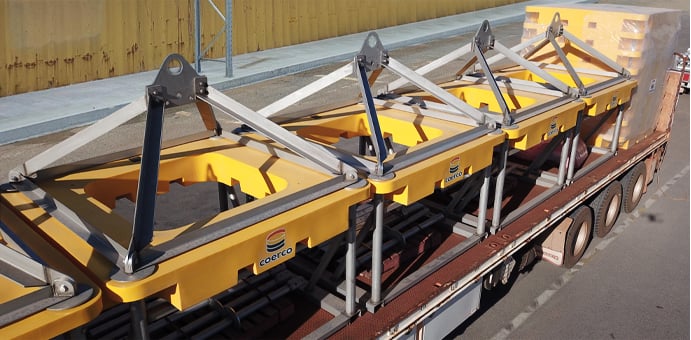
Pontoons should be portable and easy to transport and load on shipping and freight containers.
Most mining operations are in remote areas which means power source is not readily available. Hence, the pontoon design must be appropriate for the site location and power availability.
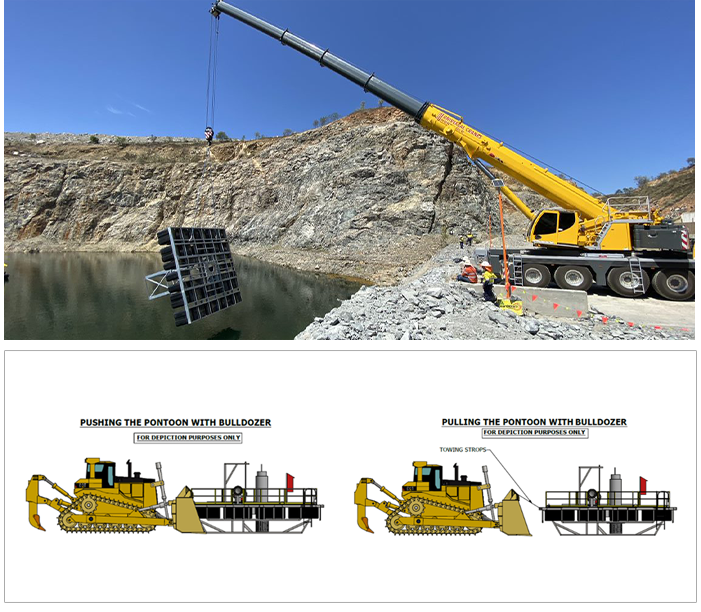
It is critical to understand the topography and site layout so that the preferred methods account for the methods of launching. One possible launching process may be through craning in with a large mobile crane if there is a suitable launch pad in the pit. But on some instances where cranage is not possible, pontoons are pushed or pulled by bulldozers or excavators.
Before deploying pontoons on-site, pontoons should be engineered with suitable restraints to withstand wind and current water loadings.
One of the most important factors you should consider is the required design and features of industrial floatation platforms of the local authority. For example, anti-slip decking is a mandatory workplace safety requirement across Australia.
Stay ahead with the latest insights and trends that matter to you. Subscribe for regular updates directly to your inbox. Don't miss crucial information to keep you competitive!
